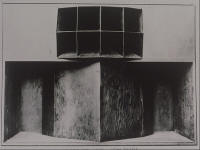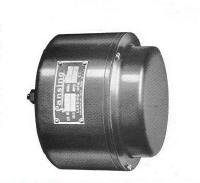|
|
|||||||||||

|
|
||||||||||
Iconic
|
|||||||||||
|
|
|||||||||||
|
Lansing Manufacturing Iconic of 1937
|
|||||||||||
|
The development of the Iconic directly relates to Lansing Manufacturing's participation in the Shearer Horn project of 1934. Prior to that project, the company was exclusively involved in the manufacture of OEM speakers for radios and phonographs. The Shearer project provided expertise and product that could be applied to the wider professional sound industry. While the Shearer Horn addressed theatre playback requirements, there were numerous other professional sound applications that could benefit from this same technology.
The first new application targeted by Lansing Manufacturing was playback monitoring for movie and phonograph recording. Jim Lansing chose a simple and direct approach of scaling down the Shearer Horn for use in smaller spaces. The result was the Monitor System 500. Whereas the original Shearer Horn used four 15XS bass drivers and a large multicellular horn, this system used a single 15XS bass driver in a small "W" horn enclosure. The same 285 compression driver from the Shearer system was employed, but it was mounted to a new, and much smaller, 805 multicellular horn. This system found immediate application in its intended market and application in sound reinforcement for smaller venues. Nonetheless, Jim Lansing was not satisfied. He recognized that the Monitor System 500 was too large for use in many monitoring situations. The earliest recording studios consisted of a relatively large recording space in which was placed a small, soundproof booth. This booth served as the equivalent of today's control room. This booth had to provide work space for the recording technician, all of the recording equipment, and a means of playback for the technician to monitor the recording process. Placing a speaker like the Monitor System 500 in such a small space was out of the question.
Jim Lansing set out to develop a speaker that was suitable for a control booth, but maintained the sound quality that was the hallmark of the Shearer Horn. Jim worked closely with Dr. John F. Blackburn to devise a solution to this problem. The result was a "clean-sheet-of-paper" design. To minimize the enclosure space, a bass reflex cabinet was adopted – referred to at that time as a "resonated baffle". A new 15" bass driver, the Model 815, was developed specifically for this system. It used a 2" round wire coil and 1600 ohm field coil. In addition, a small-format compression driver was devised. This was the Model 801 using a 1 3/4" aluminum diaphragm, 4000 ohm field coil and 1" diameter exit. The 801 driver was mounted to the new, small-format 808 multicell horn which utilized a 4 x 2 cell pattern. The two drivers were crossed over at 800hz using 12db/octave slopes.
The 801 driver bears closer examination. This would prove to be a seminal driver with an amazing legacy matched only by the 284/288. The 801 would continue in production after Lansing Manufacturing's acquisition by the All Technical Services Corporation. In the mid 1940's, Altec Lansing replaced the field coil with a permanent Alnico magnet structure to result in the model 802. The 802 would remain in continuous production until 1977. After that year, the Alnico magnet structure was replaced with a ferrite magnet structure to result in the model 902. That driver remained in production until the closure of the Altec Lansing Professional Division of Telex Communications in May, 2000. From the original 801 to the final 902, the basic design concept of these drivers remained the same. In other words, the 801 defined a design concept for small-format compression drivers that would remain valid for well over half a century. In fact, its legacy lives on in such current drivers as JBL's 2426. This driver was an outgrowth of the model 175 compression driver that Jim Lansing designed in 1947. The inspiration for the 175 was his original 801. The Iconic was recognized as a ground breaking product in its day. It was widely accepted as the finest speaker available. It was used as a laboratory reference speaker in the labs of NBC, CBS and UCLA. It immediately found acceptance in the movie, phonograph and radio industry as a playback monitor. The photo to the right shows Les Paul working in his studio with a Lansing Manufacturing Iconic hanging from the ceiling. It was also developed as one of the first high-end home speakers in versions built to furniture quality. Altec's later interest in acquiring Lansing Manufacturing was, in part, due to the high opinion of the Iconic held by their vice-president, George Carrington. The entire system was rated as +/- 2db flat from 40 hz to 10,000 hz. This was an incredibly accurate and broad bandwidth response for its time. The advance represented by this design is best exemplified by the fact that the basic concept, and derivatives of its high frequency driver, continue to find application to this day.
© 2000 Don McRitchie
|
|||||||||||





